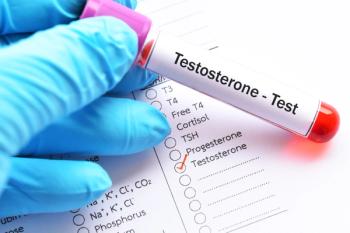
Study Shows Survival Disparities Among Children With ALL Living in US-Mexico Border Regions
Children with acute lymphoblastic leukemia living in US-Mexico border regions had worse 5-year survival rates compared with children living in other parts of Texas, a recent study found.
Children with acute lymphoblastic leukemia (ALL) living in US-Mexico border regions in Texas were more likely to die within 5 years compared with children living in other parts of the state based on data from the Texas Cancer Registry, a study published in
The US-Mexico border is known to be medically underserved, and survival disparities have been seen among adults with various cancer types. However, studies examining survival rates among children are scarcer. The current study aimed to characterize the survival impact of living on the border versus elsewhere in children diagnosed with ALL or acute myeloid leukemia (AML) between 1995 and 2017. ALL and AML account for almost 30% of childhood cancer cases, the authors noted.
The study included data on patients 19 years old or younger with AML or ALL recorded in the Texas Cancer Registry. Approximately half of the entire US-Mexico border region is between Texas and Mexico, and this region is medically underserved as well as economically disadvantaged. For this reason, the authors hypothesized that children the US-Mexico border region would have inferior survival outcomes compared with children in areas of Texas that are not in the border region.
A total of 6002 children with ALL and 1279 children with AML were included in the analysis. Among children with ALL, 855 (14.2%) lived in the border region, and 93.8% of children living in the border region were Hispanic. Of those living in the border region, 663 (77.5) lived in higher poverty census tracts. The median age at diagnosis was 5 years (IQR, 3-11 years), and median follow-up was 8.6 years (IQR, 3.64-5.17 years).
Of the 1279 children diagnosed with AML, 185 (14.4%) lived in the border region, 93.5% of those living in the border region were Hispanic, and 77.3% lived in high poverty census tracts. The median age at diagnosis among children with AML was 9 years (IQR, 2-15 years), and the median follow‐up was 4.5 years (IQR, 1.2-12.7 years).
Border region residence was associated with worse overall survival (OS) in children with ALL. These children showed a 5-year OS rate of 77.5% (95% CI, 74.4%-80.3%), while those from non-border regions had a 5-year OS of 85.8% 95% CI, 84.8%–86.8%). After adjusting for relevant covariates, living in a border area was associated with a 30% greater risk of death versus living in a non-border region. Non-Hispanic Black children and Hispanic children were also at an increased risk of death compared with non-Hispanic White children in the study. Children in the highest poverty level areas were also at a greater risk of death than children in areas with the lowest level of poverty.
Children with AML living in border regions had lower rates of survival compared with children in non-border areas, but the difference was not statistically significant. Among children with AML in border areas, the 5-year survival rate was 53.6% (95% CI, 45.9%-60.73%), while children from non-border areas had a 5-year survival rate of 60.1% (95% CI, 57.0%-63.04%). Unadjusted models showed an increased risk of death among children living in border regions, but the adjusted models did not show a statistically significant difference.
The findings suggest there are significant survival disparities between children with ALL living in US-Mexico border regions and those living in other areas. This highlights a need for incorporating social determinants of health in registries and clinical trials to determine how these factors impact survival outcomes.
“While there have been tremendous achievements in maximizing cure rates for children with leukemia in the United States, not everyone is benefiting from these advances. We know there are differences in survival, with children from historically marginalized Hispanic and Black communities faring worse than White children,” study author Maria Castellanos, MD, said in a
Reference
1. Castellanos MI, Oluyomi AO, Chambers TM, et al. Ethnic disparities in childhood leukemia survival by border residence: A Texas population-based analysis. Cancer. Published online February 21, 2023. doi:10.1002/cncr.34636
2. Does living along the US-Mexico border affect the chances of survival among children with leukemia? News Release. Wiley. February 21, 2023. Accessed February 21, 2023.
Newsletter
Stay ahead of policy, cost, and value—subscribe to AJMC for expert insights at the intersection of clinical care and health economics.















































